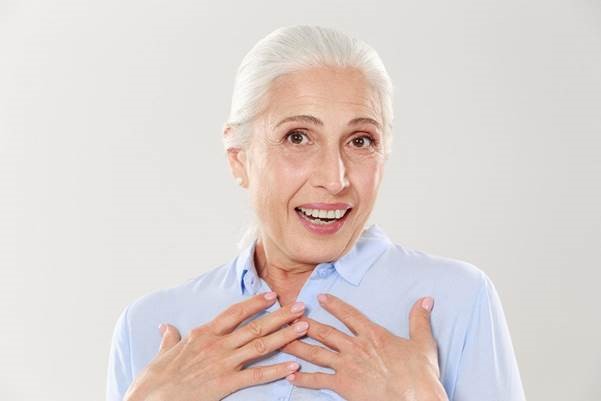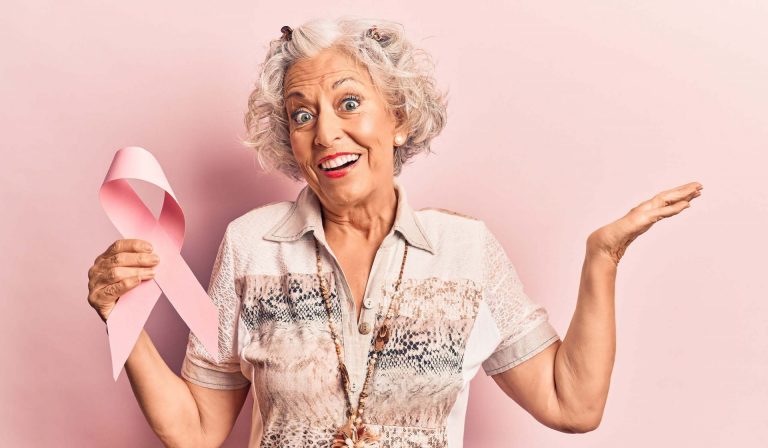With Breast Surgeon Dr Mary Ling
Our “girls” are with us for the long haul. They are with us as youngsters, as we eagerly await our first training bra. They are an endless source of male fascination in our dating years. They nourish our babies when we nurse and they are fundamentally what makes us well … female.
Which is even more reason why we need to look after them as we age, with the risk of breast cancer increasing with every passing decade. The incidence of breast cancer is increasing too – the current risk of being diagnosed with breast cancer by age 85 is 1 in 7 women, up from 1 in 8 women in 2008 and 1 in 9 women in 1992.
The good news is that survival rates for breast cancer are better than ever. The chance of surviving at least 5 years after a diagnosis of breast cancer has increased from 74 percent in 1986-1990 to 90 percent in 2011-2015. For early breast cancer, the survival rate approaches 100 per cent.
But the bad news is that in 2020, there has been a 37 percent drop in new breast cancer diagnoses due to the COVID-19 pandemic, as fewer women are going to the doctors even when they have breast symptoms. This means in the months ahead we can expect a surge in cancer cases, with more women presenting with advanced and potentially incurable breast cancers.
Undoubtedly, the COVID-19 pandemic has changed the way we live. But cancer won’t wait for the pandemic to end. That’s why it is critical to put preventative care back on your to-do list.
Learn about the important actions to take for your breast health in your 50s, 60s and 70s.

In Your 50s
When you turn 50, you will receive an invitation from BreastScreen to attend your first screening mammogram. Screening mammograms can pick up cancers as small as a grain of rice, usually 2 to 3 years before a palpable lump develops. Early diagnosis means less invasive treatment, potentially avoiding chemotherapy and mastectomy, as well as improved survival.
Many women start taking hormone replacement therapy (HRT) around now, which is linked to a small increased risk of breast cancer, whilst alcohol is linked to 1 in 5 cases of breast cancer. And taking HRT and alcohol together adds an extra layer of risk. Research has shown that women who take HRT and have more than 2 alcoholic drinks per day had a breast cancer risk that was 5 times higher than women who did not drink and did not take HRT. Consider limiting your alcohol intake (to no more than 2 standard drinks per day) and taking HRT for the shortest time possible.
In Your 60s
The average age of breast cancer diagnosis is 62 years old, so do continue with your screening mammograms.
“Remember that mammograms are your friends, not your enemies. You can catch something early or rejoice if nothing is found. Either way, you’re ahead of the game,”
Joy, breast cancer survivor, from The Central Coast Breast Cancer Compendium.
Watch the kilo creep, with obesity being associated with a markedly increased risk of hormone receptor positive breast cancer in postmenopausal women. After menopause, active oestrogen in your body comes from the conversion of androgen in fat tissue by the enzyme aromatase. Fat tissue is rich in aromatase, meaning obese women have higher levels of oestrogen. However, it is not all bad news, with recent evidence showing modest weight loss (5% in weight) can significantly reduce the risk of breast cancer.
Also, exercise remains important, with evidence showing it can significantly reduce the risk of breast cancer and the risk of recurrence in breast cancer survivors. Cancer Council recommends aiming for at least 60 minutes of moderate activity or 30 minutes of vigorous activity every day.
In Your 70s
After the age of 74, BreastScreen stops sending you reminders for screening mammograms – but don’t assume you are past breast cancer! Breast cancer is still the most commonly diagnosed cancer in older Australian women. Recently, Blanche D’Alpuget, the wife of former Prime Minister Bob Hawke, was diagnosed with breast cancer at the age of 76.
There is no hard-and-fast rule for screening mammograms beyond the age of 74. If you are in good health, you may wish to continue with your free biennial mammograms. Whereas, if you have serious health problems, you may decide breast screening is not a priority as it may pick up slow growing cancers that may never progress to cause symptoms.
Breast awareness is important at any age, but once you have stopped screening mammograms, it becomes your only way to pick up breast cancers. Being breast aware means knowing how your breasts normally look and feel, and noticing new changes. “Saggy breasts” are a common change that occurs with ageing, but if you notice a new lump, a sunken nipple, dimpling or “orange peel” appearance of your breast skin – see your doctor without delay.
BREAST SELF EXAMS
Take these 3 moments to check your breasts
Mirror Check

Inspect your breasts with arms by your side, behind your head and then with hands on hips. At each step, look for dimpling of skin or pulling in of the nipple, as well as any changes in shape, size or colour of your breast, including nipples.
Lying Down Check

Lying on your back helps flatten your breast tissue, making it easier to examine. Use the pads of your three middle fingers moving around the entire breast in a circular pattern.
Cover the entire breast area from your breastbone to your armpit and from the bottom of your breast to your collarbone.
Shower Check

Use the same technique for Lying Down Check.
Mary Ling




